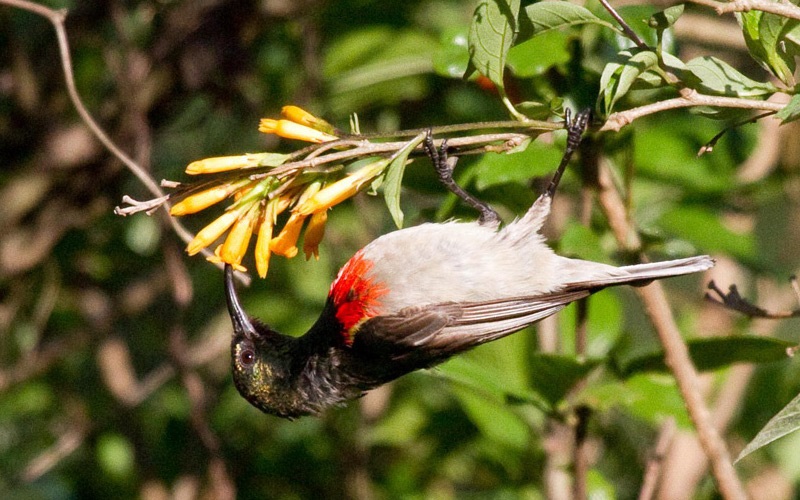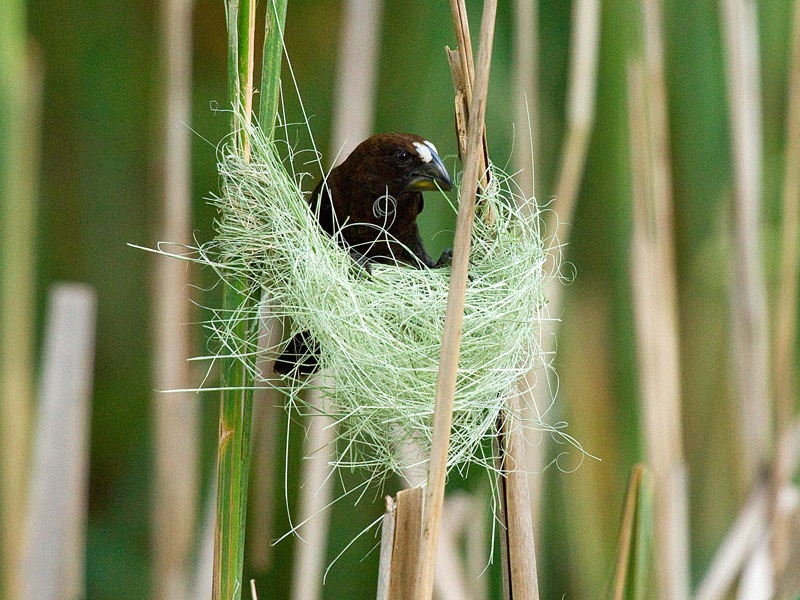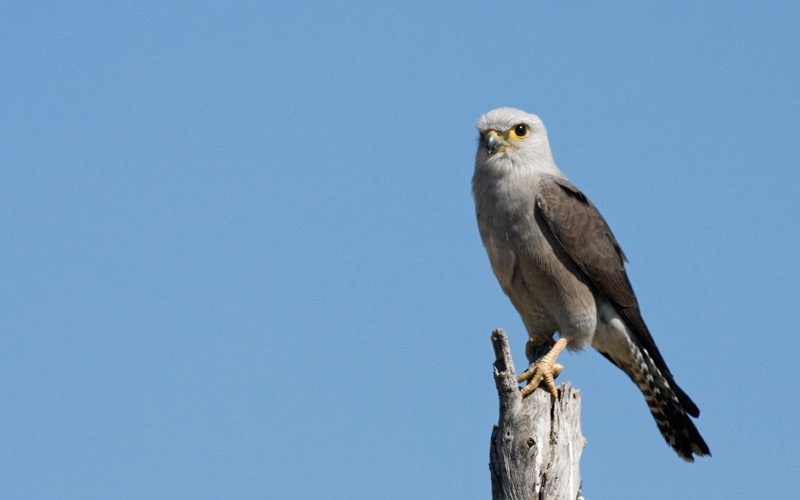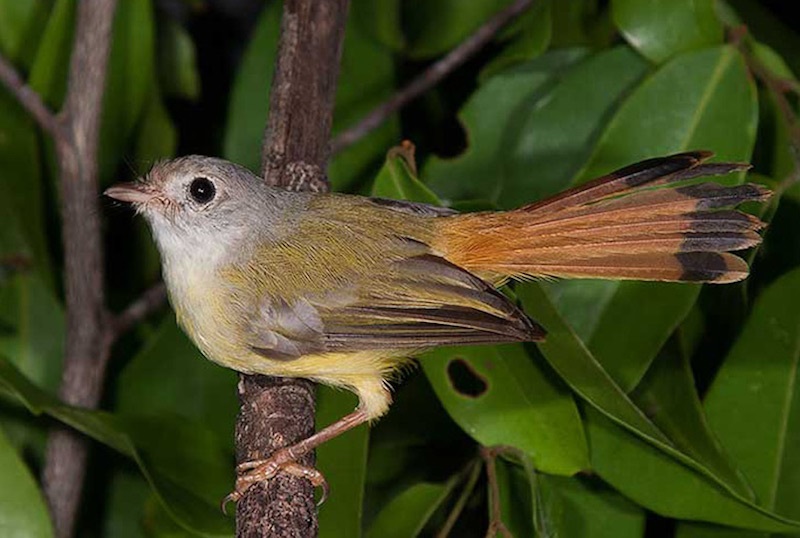The Republic of Zambia is a landlocked tropical country in south-central Africa. It has an area of 752,614km² and in 1994 the population was estimated to be 9.3 million, thus the average population density is 12.4 people per km². Most of the country is elevated plateau between 900m-1250m a.s.l. and small area in the north-east exceeds 2000m. Through Zambia lie several ancient arms of the rift valley system, notably the Luangwa and Zambezi Valleys (including the famous Victoria Falls) and the country around Lakes Mweru and Tanganyika. Most of the country is drained by the Zambezi system which flows into the Indian ocean. The remaining area lies within the Congo catchment and thus eventually feeds the Atlantic. Zambia’s very pleasant climate can be divided into 3 seasons. The hot rainy season usually lasts 5-6 months between November and April. The remaining months are generally dry with temperatures cooler between May and August and hotter in September and October. Annual rainfall averages between 700-1500mm, decreasing southwards and in the major low-lying river valleys.

About 750 species have been recorded in Zambia. Of this total, well over 600 species are residents or afro-tropical migrants which breed here and about 100 are non-breeding migrants or vagrants from the palearctic region. Zambia has only two true endemic species (Chaplin’s Barbet & Black-cheeked Lovebird); but there are several near-endemics and a large number of species that otherwise only occur in Angola and DRC – countries that are less accessible to travelling birders. It is the best place for finding all the south-central African endemics and one of the most important countries in Africa for birds.

Zambia can boast large tracts of pristine wilderness and the vast majority of the country falls within the Zambezian biome. Miombo woodland is the dominant vegetation and as it has little under-storey it is easy to walk through. The key to successful birding is locating bird parties; these may comprise 20, 30 or more species and are a typical feature of the habitat. In most areas the woodland is laced with grassy dambos along the drainage lines; these hold a very different variety of species, particularly if they are wet or spongy. In the north, evergreen forest patches (mushitus) are found in dambos and in the north-west there are many forest species characteristic of the Congo basin.

In the north-east several highland areas hold afromontane species, including many typical of the Eastern Arc mountains in Tanzania. Zambia also has a rich array of wetlands that are famous for their vast numbers of birds as well as their populations of Shoebills and Wattled Cranes. Further exploration of the country will reveal many other interesting habitats for birding such as teak and dry evergreen forest, acacia, munga & mopane woodland, thickets, termitaria, plains, papyrus swamps and seasonal pans. There are 19 National Parks in Zambia, covering nearly 9% of the country and in addition 35 Game Management Areas (GMAs) account for a further 22%.
Some top wildlife viewing sites:
Bangweulu Swamps – between Serenje and Samfya, is the place for Shoebills, several camps and other good birding spots nearby (e.g. Kasanka and Lavushi Manda NPs). Other birds include: Denham’s Bustard, Common Bittern, White-cheeked Bee-eater, Rosy-breasted Longclaw, Wattled Crane, Swamp Flycatcher.

Chimfunshi Wildlife Orphanage (Map)
Chimfunshi Wildlife Orphanage – a world famous home for Chimpanzees near Chingola, with accommodation, also a great birding spot. Birds include: Pale-billed Hornbill, Purple-throated Cuckoo-shrike, Central Bearded Scrub Robin, Bocage’s Robin, Evergreen Forest Warbler, Laura’s Warbler, Black-collared Eremomela, Splendid Starling, Chestnut-mantled Sparrow-weaver, Sharp-tailed Starling, White-chinned Prinia, Sousa’s Shrike, Red-capped Crombec.
Ishiba Ng’andu Nature Reserve (Map)
Ishiba Ng’andu – the spectacular estate near Mpika was made famous in the best-selling book The Africa House. Accommodation. Birds include: White-headed Saw-wing, Bocage’s Robin, Stout Cisticola, Bar-winged Weaver, Böhm’s Flycatcher, White-tailed Blue Flycatcher, Red-and-blue Sunbird, Black-chinned Quailfinch, Fülleborn’s Longclaw, Ross’s Turaco, Long-toed Flufftail, Yellow-bellied Hyliota.

Lochinvar NP – in southern Zambia near Monze, some of the best wetland birding in the world with tens of thousands of waterbirds, camping or day trips. These include: Slaty Egret, Wattled Crane, Common Pratincole, White Pelican, Saddle-billed Stork, Denham’s Bustard, Yellow-throated Sandgrouse, Caspian Plover and many palearctic waders and very good for raptors.

Mwinilunga – the far north-west where the Congo birds begin. Stay at Nchila Wildlife Reserve (Hillwood) and from there visit the source of the Zambezi, the Zambezi Rapids, the Chitunta Plain and the forests of the far north. Birds include: Grimwood’s Longclaw, Black-collared Bulbul, Angola Lark, Black-tailed Cisticola, Rufous Ant Thrush, Afep Pigeon, White-spotted Flufftail, Olive Long-tailed Cuckoo, Blue-breasted Kingfisher, Brown-eared Woodpecker, Chestnut Wattle-eye, Black-and-rufous Swallow, Honeyguide Greenbul, Bristlebill, Grey-winged Robin, Bamboo Warbler, Spotted Thrush-babbler, Margaret’s Batis, Red-bellied Paradise Flycatcher, Bannerman’s Sunbird.
Nkanga River Conservation Area (Map)
Nkanga River Conservation Area – near Chaoma in southern Zambia, the best site for Zambia’s endemic, Chaplin’s Barbet, with accommodation, also within easy reach of Victoria Falls, Kafue NP and Lochinvar. Birds include: Crowned Eagle, 6 species of francolin, Streaky-breasted Flufftail, Sooty Chat, Miombo Pied Barbet, White-winged Black Tit, Green Indigobird, Narina Trogon, African Broadbill, Shelley’s Sunbird. Black-cheeked Lovebird is found in Kafue NP nearby.

Nyika NP – the best area to find all the montane specials, camping, or accommodation on Malawi side close by. Birds include: Bar-tailed Trogon, Olive-flanked Robin, Sharpe’s Akalat, African Hill Babbler, Silvery-cheeked Hornbill, Red-tufted Malachite Sunbird, Bertram’s Weaver, Mountain Marsh Whydah, White-chested Alethe, Mountain Yellow Warbler, Moustached Green Tinkerbird, Waller’s Red-winged Starling, Chestnut-headed Apalis, Blue Swallow, Hildebrandt’s Francolin.
South Luangwa National Park (Map)
South Luangwa NP – near Chipata in eastern Zambia, the most popular NP for big game viewing with many camps. Birds include: Bat Hawk, Pel’s Fishing Owl, Lilian’s Lovebird, African Skimmer, Southern Crowned Crane, African Pitta, Southern Carmine Bee-eater.
Major Source: Fatbirder
Photo Source: Birding Ecotours
Map Source: Googlemaps™
